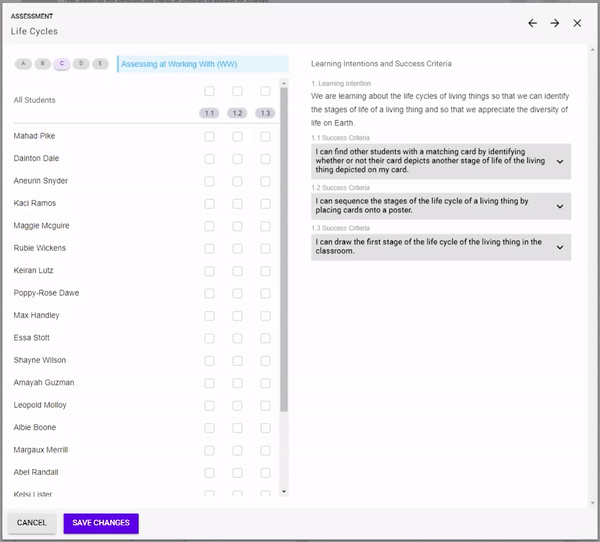INTRODUCING: Student Assessment Tool
We have just published a new tool that enables teachers to assess student achievement against success criteria!
Teachers will be able to use the data generated from MAPPEN’s new assessment tool to:
make on-balance judgements when writing student reports
use as formative assessment to differentiate future learning
The Rationale
MAPPEN’s concept-based learning sequences follow an integrated approach to curriculum design, combining multiple learning areas into a single learning sequence that is drawn together through the lens of a concept.
This approach can make reporting on student achievement more complex - but we have been working hard to solve this issue for our community and are very excited to have published the first version of MAPPEN’s new student assessment tool!
Getting Started with Version 1
Teachers can now start collecting assessment data by opening MAPPEN, clicking on the 'Assessment' tab within an activity and indicating which of their students have achieved the success criterion.
Once they have completed the assessment for a particular learning sequence, they can visit the new assessment tool and print/download a report of success criteria achievements for a particular student.
We will be collecting data and welcoming feedback from teachers and school leaders regarding ways in which they are using this tool. If you have any questions or suggestions for improvement, please email us at support@getmappen.com.
Plans for Version 2
The plan for the next version of this tool, is to provide teachers with a report to show student achievement against mandated achievement standards/outcomes.
We don’t have a timeline for this version, but we are very excited about the possibilities.
New to MAPPEN?
We’d love to chat with you about your needs and show you how it works. If you’d like a demo or free access to an Exploration Account, don’t hesitate to get in touch.

